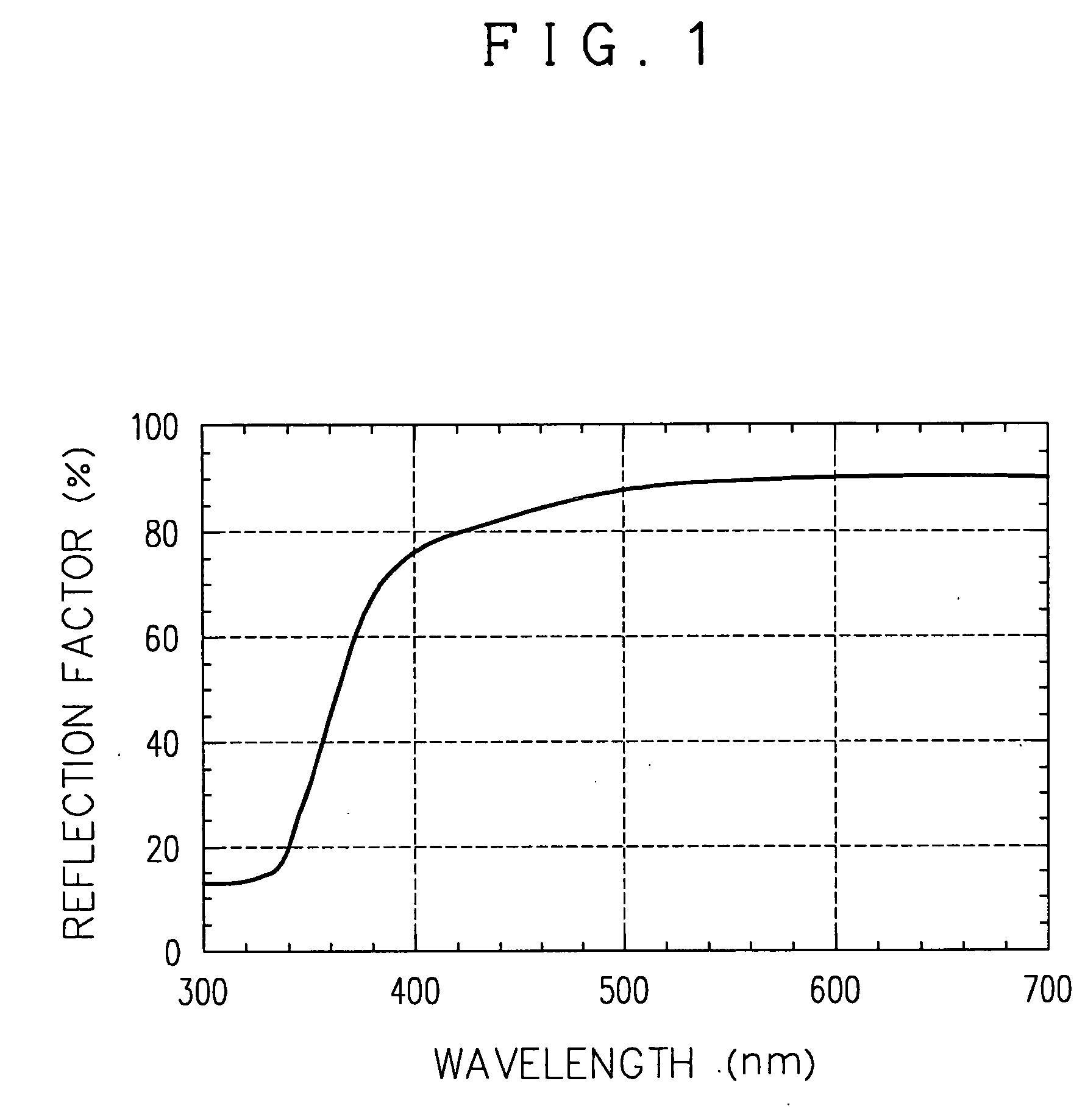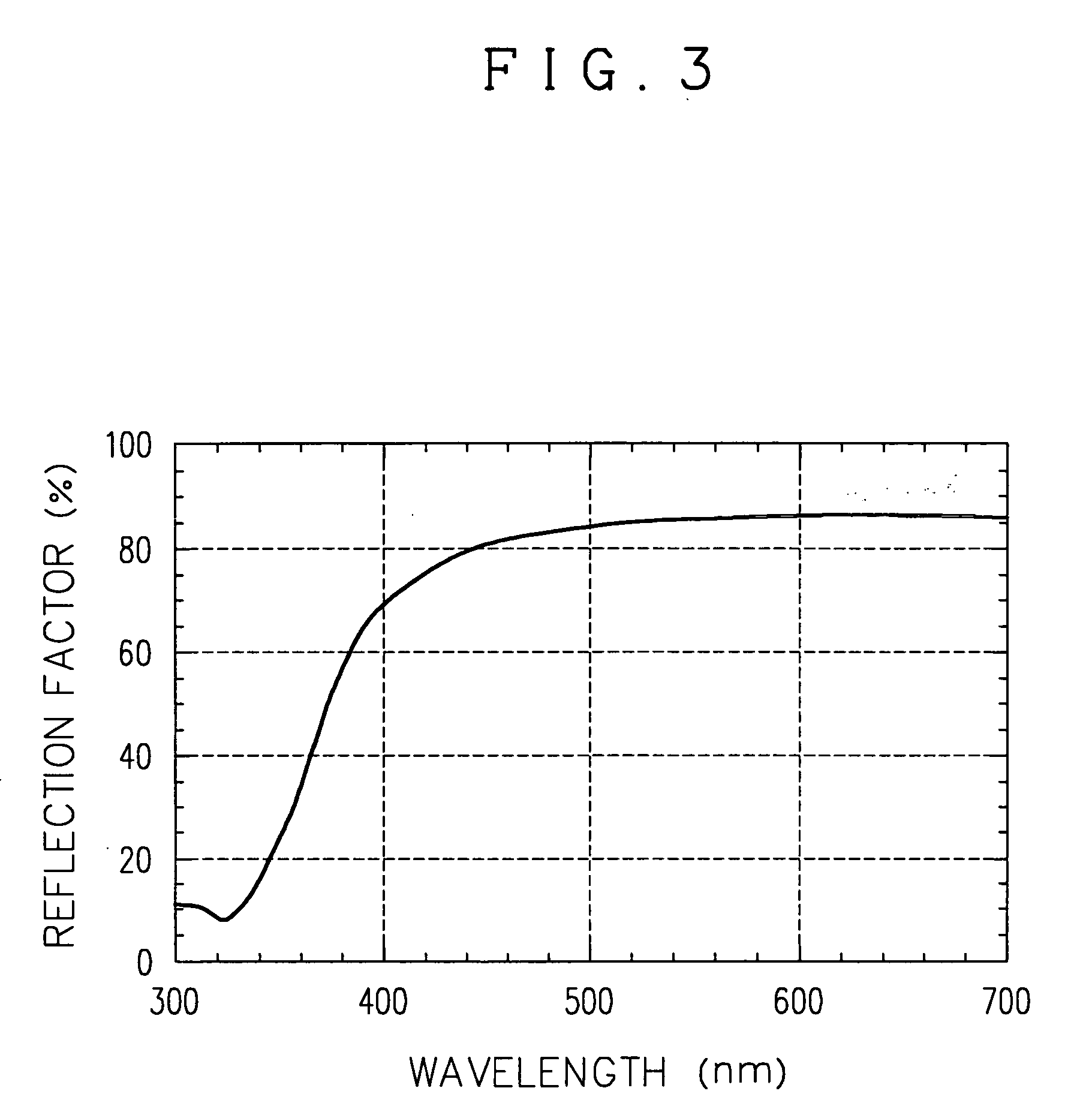Resin composition for reflecting plate
a technology of reflective plate and composition, applied in the direction of mirrors, etc., can solve the problems of high defective rate, deviating from dimensional precision, and difficult to uniformly apply plating to the whole, and achieve the effect of insufficient light generation
- Summary
- Abstract
- Description
- Claims
- Application Information
AI Technical Summary
Benefits of technology
Problems solved by technology
Method used
Image
Examples
examples
[0102] First, resin compositions according to the first aspect of the present invention will specifically be set forth in terms of Examples and Comparative Examples. Additionally, synthetic resins and inorganic fibers used in the present
Examples and the Comparative Examples are specified as follows:
[Synthetic Resins]
[0103] Semi-aromatic polyamide A: a semi-aromatic polyamide (trade name “Amodel A4000”, product of DuPont) produced by polymerizing hexamethylenediamine, terephthalic acid and adipic acid, in the ratio of 50% by mole to 32% by mole to 18% by mole, respectively.
[0104] Semi-aromatic polyamide B: a semi-aromatic polyamide (trade name “Zytel HTN501”, product of DuPont, melting point 305° C., glass transition temperature 125° C.) produced by polymerizing 2-methylpentamethylenediamine, hexamethylenediamine and terephthalic acid in the ratio of 25% by mole, 25% by mole and 50% by mole, respectively.
[0105] Polyphenylsulfide: (trade name “Ryton M2888”, product of Toray Indu...
PUM
| Property | Measurement | Unit |
|---|---|---|
| Percent by mass | aaaaa | aaaaa |
| Percent by mass | aaaaa | aaaaa |
| Percent by mole | aaaaa | aaaaa |
Abstract
Description
Claims
Application Information
 Login to View More
Login to View More - R&D
- Intellectual Property
- Life Sciences
- Materials
- Tech Scout
- Unparalleled Data Quality
- Higher Quality Content
- 60% Fewer Hallucinations
Browse by: Latest US Patents, China's latest patents, Technical Efficacy Thesaurus, Application Domain, Technology Topic, Popular Technical Reports.
© 2025 PatSnap. All rights reserved.Legal|Privacy policy|Modern Slavery Act Transparency Statement|Sitemap|About US| Contact US: help@patsnap.com



